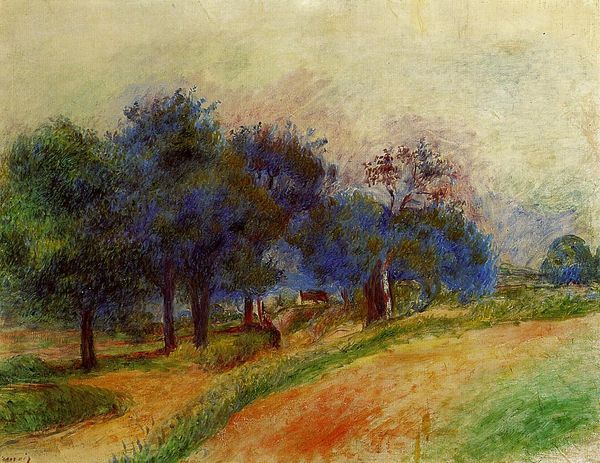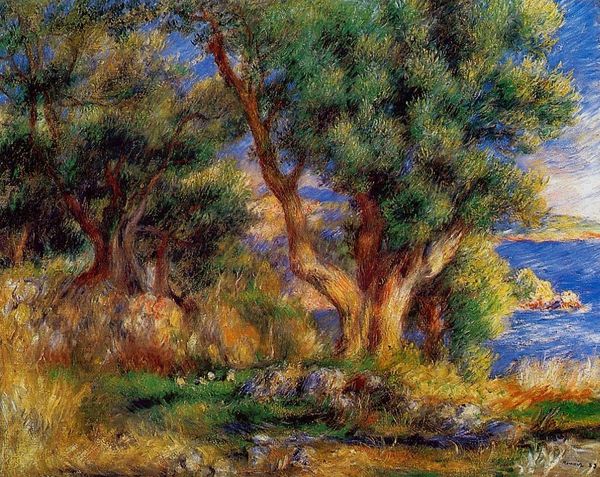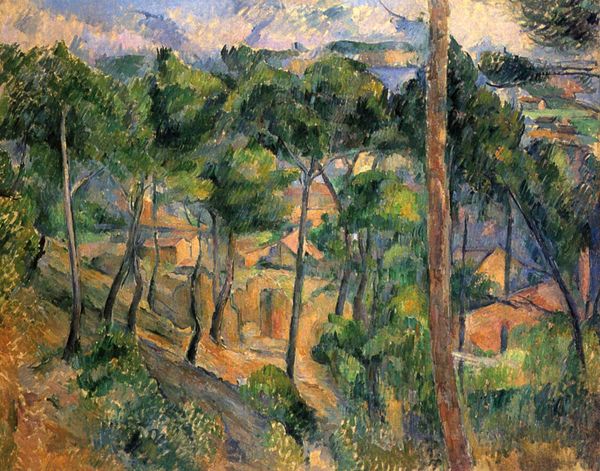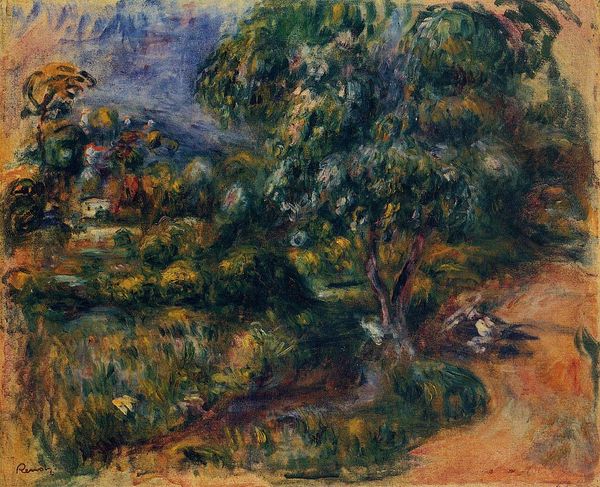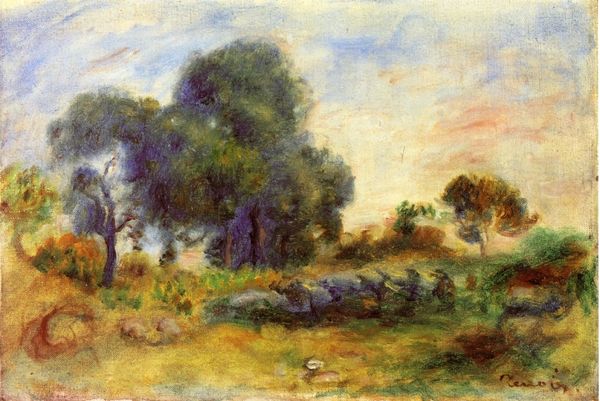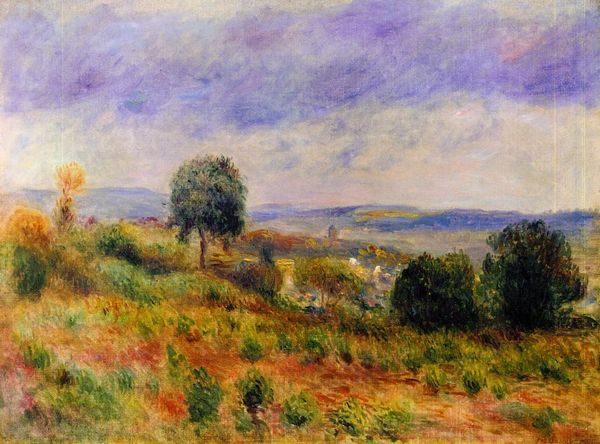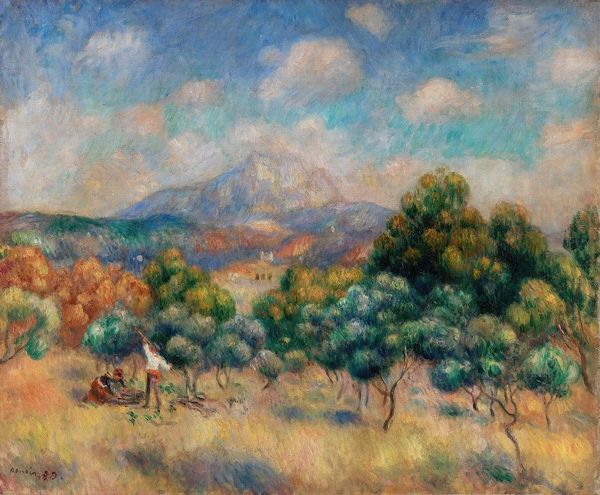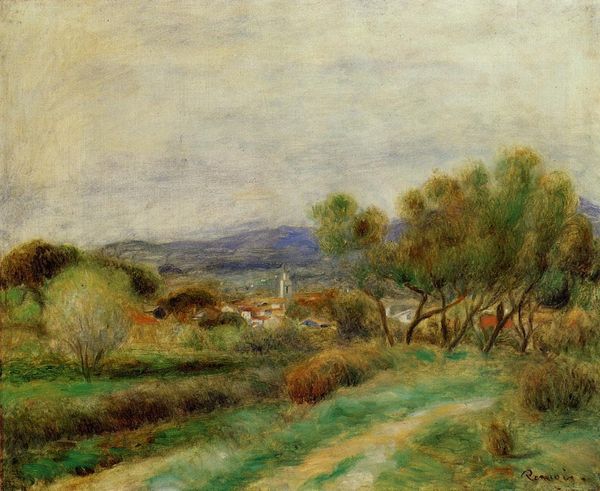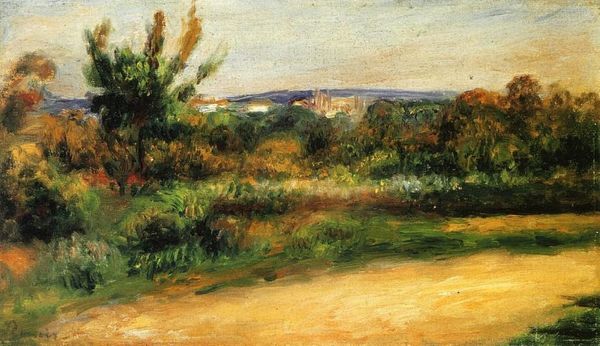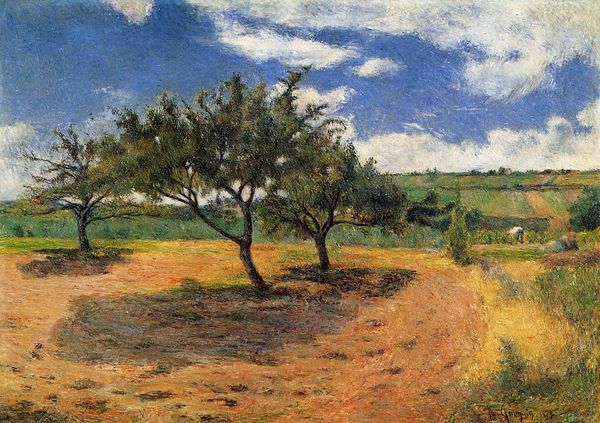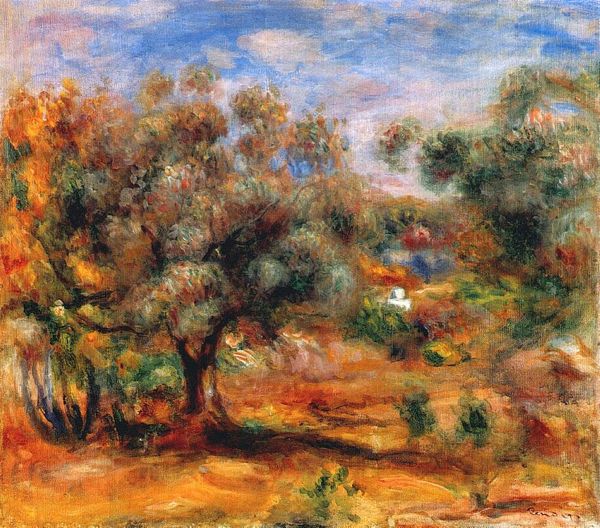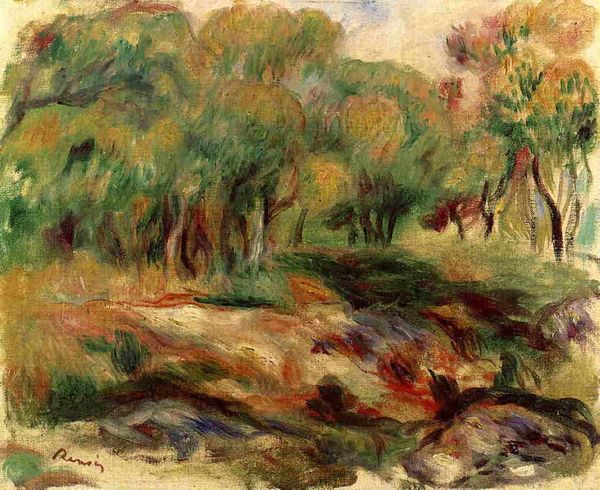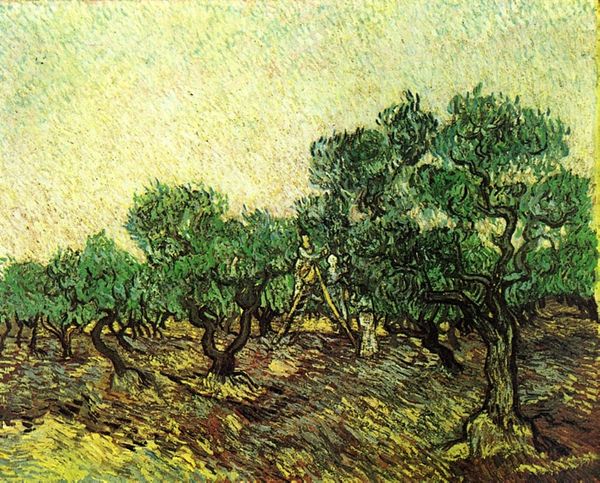
Copyright: Public domain
Curator: Standing before us is Pierre-Auguste Renoir's "View of Antibes," created in 1893. It’s an oil on canvas piece. Editor: The overwhelming feeling I get is one of serenity. There is something truly transportive about the hazy light. It feels almost dreamlike. Curator: Dreamlike is an excellent descriptor. The artist had moved to the South of France, seeking a climate that was beneficial for his rheumatoid arthritis, so that tranquility we feel may reflect his personal yearning for peace. This work uses plein-air techniques to render the unique play of light on the Mediterranean landscape. Note the elevated viewpoint too; a safe distance. Editor: I see the impact of place, especially for artists navigating conditions, disability, and access. How was landscape art perceived at this time, especially when created by an artist with shifting personal abilities and politics? There’s a socio-political aspect in the romanticisation of leisure and nature only some can reach. Who benefits, who gets to paint it? Curator: Certainly, art and access intersect! Beyond that, Renoir's exploration of light and form in the Impressionist style reveals a commitment to capturing fleeting moments and emotional resonance rather than pure accuracy. Consider how form becomes nearly subordinate to light in defining what is present, making it feel less tangible. It almost reflects a deeper understanding of time and mortality. Editor: Absolutely. Thinking about time brings another lens to this idyll. As a frequent subject of art across millennia, it still highlights issues surrounding wealth, and access, but this time with the added lens of ecological destruction and a longing for a pre-industrial "untouched" scene that now is almost certainly gone. Curator: Very true. It holds complex themes beyond surface-level serenity. Thank you, this conversation has revealed that this captivating "View of Antibes" engages not just with the beauty of nature, but also with broader reflections on individual perception. Editor: Yes, bringing new thoughts to something that initially seemed so still helps unveil complex societal layers, like access and ecology, making art like Renoir’s forever socially relevant and reflective of our moment.
Comments
No comments
Be the first to comment and join the conversation on the ultimate creative platform.
